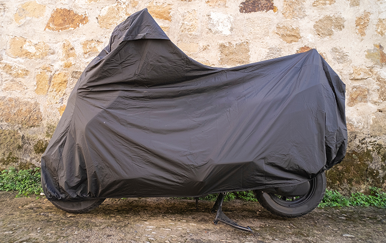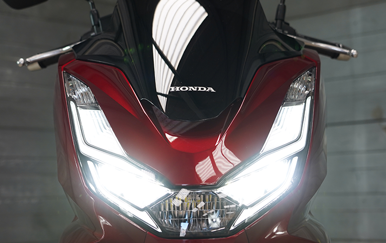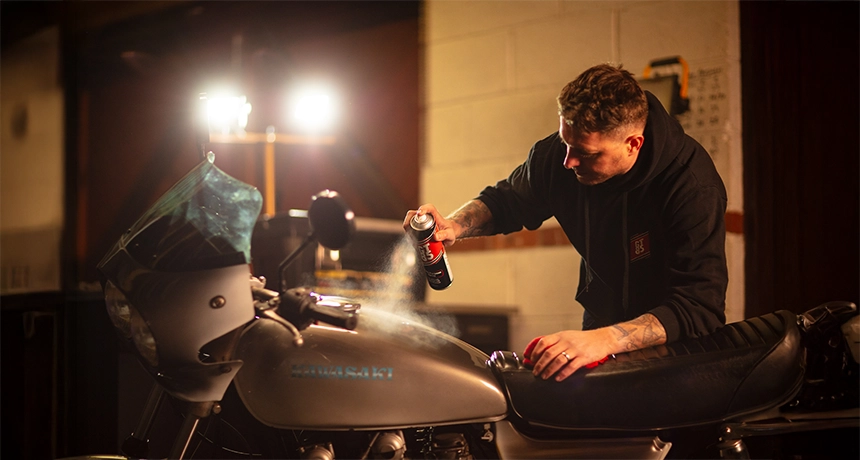
Rust can be one of the biggest enemies of a motorcycle or scooter– particularly in Britain with our varied climate. This natural form of corrosion attacks many metals not only affecting your machine’s looks but also damaging its operation and safety by way of attacking its suspension, brakes drive chain and more.
But fret not. If you adopt a diligent preventative maintenance regime sometimes using specific products, rust can be prevented. What’s more, even if rust has started to take hold, it can also often be cleaned and removed – if you know how.
Rust is the common term for iron oxide which is the result of the oxidation – or corrosion – of iron. As such it affects iron and (non-stainless) steel with the latter forming the bulk (but not all) of your bike’s components such as its frame (unless aluminium), fork sliders (although chromed, they’re steel underneath and a chip in the chrome allows rust to form), tank and chain.
Oxidation occurs when iron meets oxygen (in the air) and moisture. By definition, therefore, rust is more likely in winter (when your bike is exposed to more damp), especially as the use of road salt enhances the risk as salt water is a better conductor of electricity so the electrolysis reaction that causes corrosion takes place faster.
Any prevention or treatment of rust, therefore, depends on removing completely or minimizing those three components.
Here, we pick our five top tips for preventing the formation of rust in the first place, then add to that with five more for removing rust if it’s already taking place...
Take Preventative Measures to Deter Rust:
1. Keep your Bike Clean
 Regularly wash your motorcycle (or scooter) with water and a mild soap or specific cleaner, especially after riding in wet or dirty conditions and then also dry it thoroughly with a microfibre cloth or chamois paying particular attention to areas where water can accumulate.
Regularly wash your motorcycle (or scooter) with water and a mild soap or specific cleaner, especially after riding in wet or dirty conditions and then also dry it thoroughly with a microfibre cloth or chamois paying particular attention to areas where water can accumulate.
Using a jet-wash will help to get into all those awkward nooks and crannies but you should be careful around vulnerable areas such as the electrics and be sure to dry thoroughly afterwards.
2. Use Rust Inhibitors
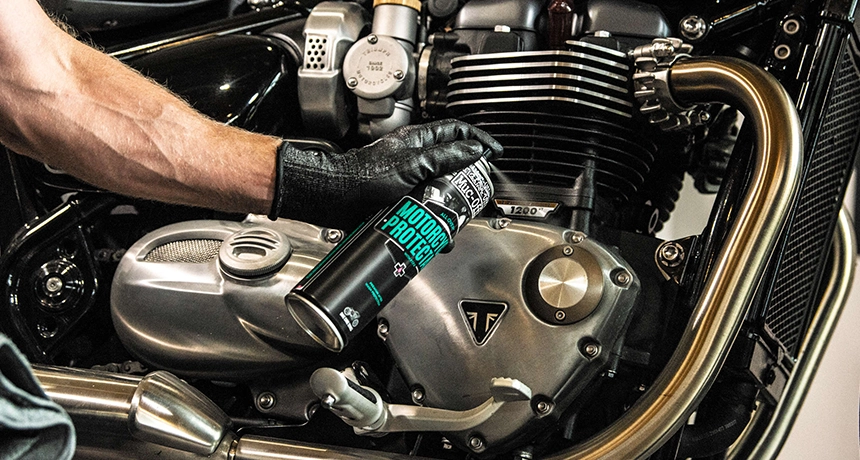
After washing (and drying) apply a spray-on rust-prevention inhibitor such as ACF-50, WD-40 or Muc-Off to exposed metal parts. These displace moisture and provide a protective layer so reducing the likelihood of rust. Remember, however, to avoid your brake discs which rely on friction for operation.
3. Lubricate Moving Parts
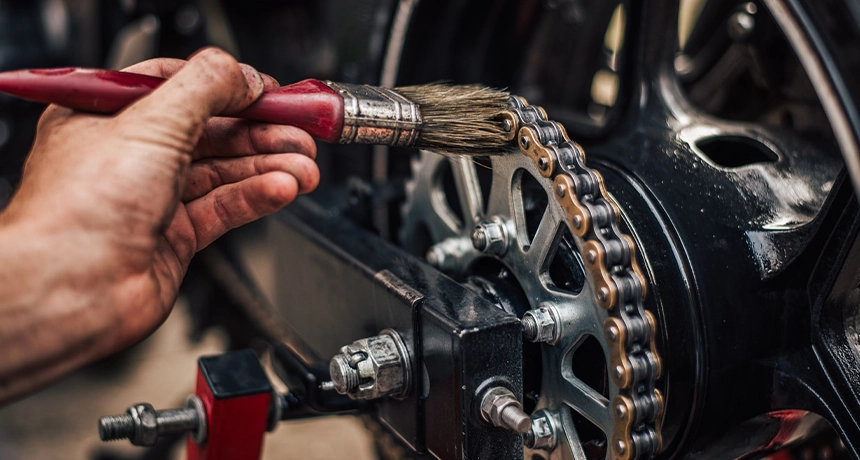
Regularly lubricate your chain with a quality, dedicated product. Better still, clean it thoroughly beforehand and ensure it’s properly adjusted afterwards. You should also consider re-greasing your wheel spindles and lube all cables.
4. Store your Bike Properly
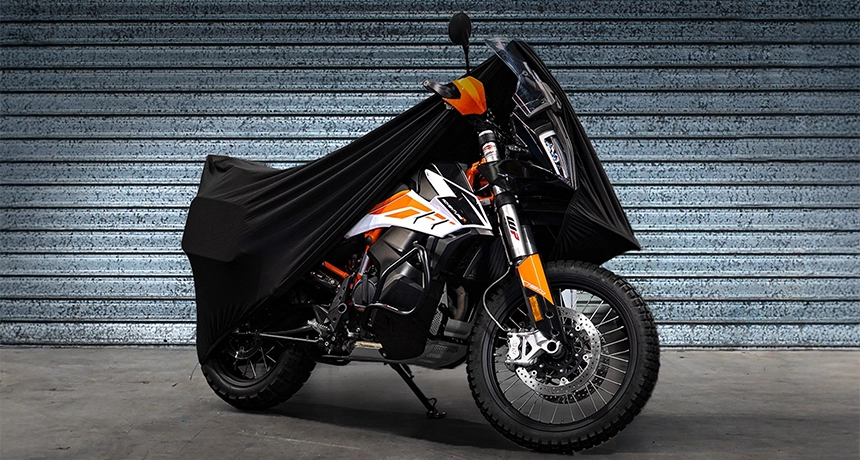
If possible, store your machine in a dry, well-ventilated area, ideally in a garage or shed away from moisture and direct sunlight.
Over longer periods use a bike cover, consider disconnecting the battery and using a battery maintenance device and use its main stand or paddock stands to take the weight off its tyres.
5. Manage Fuel Levels
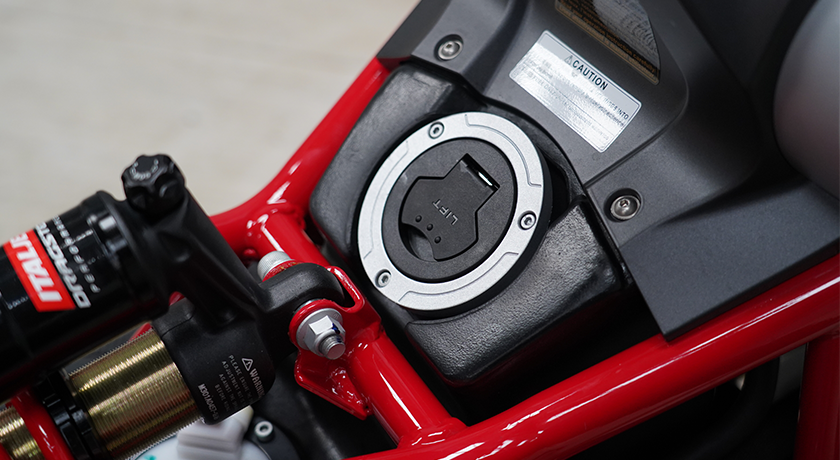
The insides of petrol tanks can be particularly prone to rust due to the exposed surfaces and internal moisture build up. Keep your fuel tank full whenever possible and consider adding a fuel stabilizer, especially before any seasonal storage.
Remedial Measures to Remove Rust
1. Regular Inspection
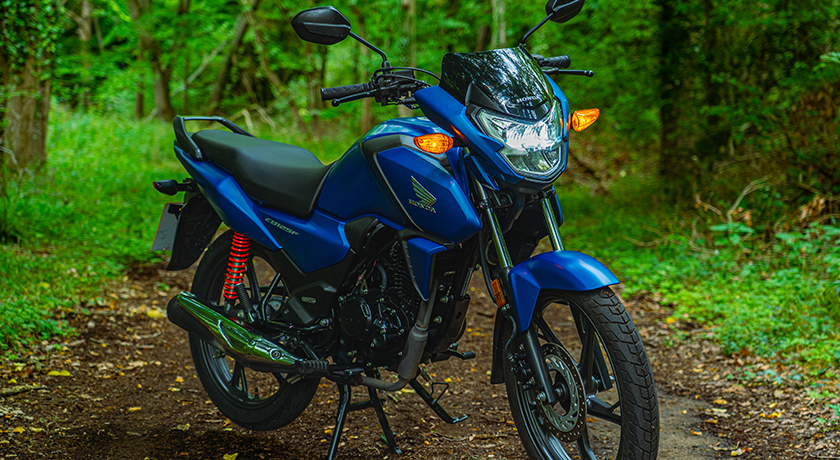
Routinely inspect your bike or scooter to ensure that you identify any early signs of rust – particularly in less visible areas. Then, if discovered, act accordingly – don’t put it off.
2. Regular Bike Cleaning
For minor surface rust, try cleaning with a soft cloth and dedicated polish or cleaning compound.
3. Chrome Treatment
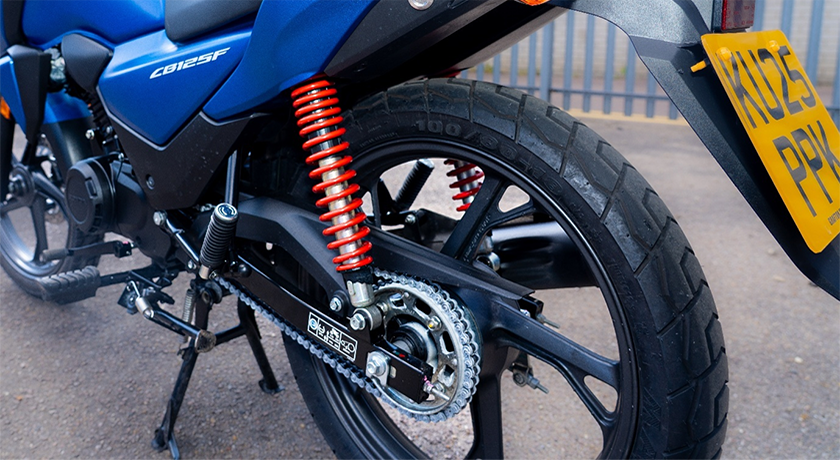
Chromed areas, such as fork legs, exhaust header pipes, are often the most vulnerable to rust as stone chips can expose the steel allowing the ingress of water and grime leading to rust. You can treat using a specialised rust remover and cloth or, if necessary, a fine steel wire wool and metal polish but you’ll also need to repeatedly monitor or reapply a protective later to prevent further occurrences.
4. Homemade Remedies
Although there is a wealth of specialists’ products and treatments available, some ‘homemade’ remedies can do just as good a job. White vinegar or cola can be used to break down rust due to their acidity. Some also recommend using, on chrome, household aluminium foil which is softer than chrome, and the acidity, when combined with cola or vinegar, helps remove the rust.
5. Re-apply a Protective Layer
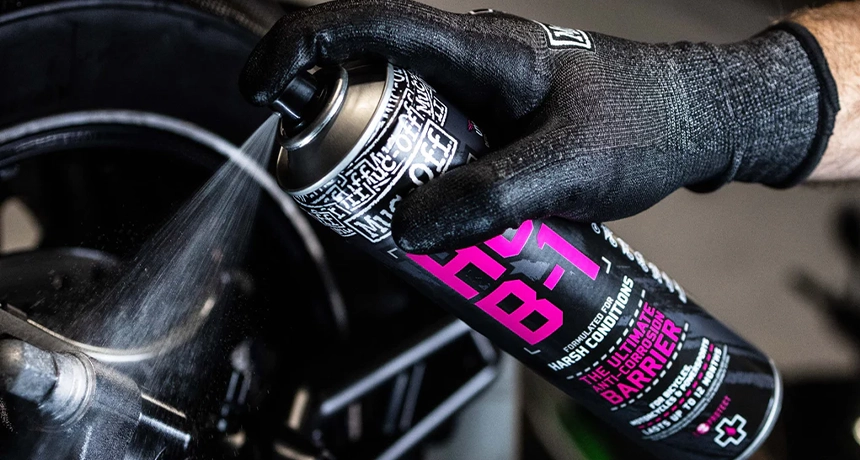
Once the rust is removed you need to regular maintain the affected area thereafter to avoid re-occurrences. This can involve simple regular cleaning then application of an inhibitor or may require re-painting, lacquering or, in extreme cases, re-chroming.
The Last Stop!
So there you have it, I hope you enjoyed my rundown to my top 10 tips to prevent rust on your motorcycle!
Last but not least, if you are in need of motorcycle insurance - make sure to get a quote direct with Lexham!



